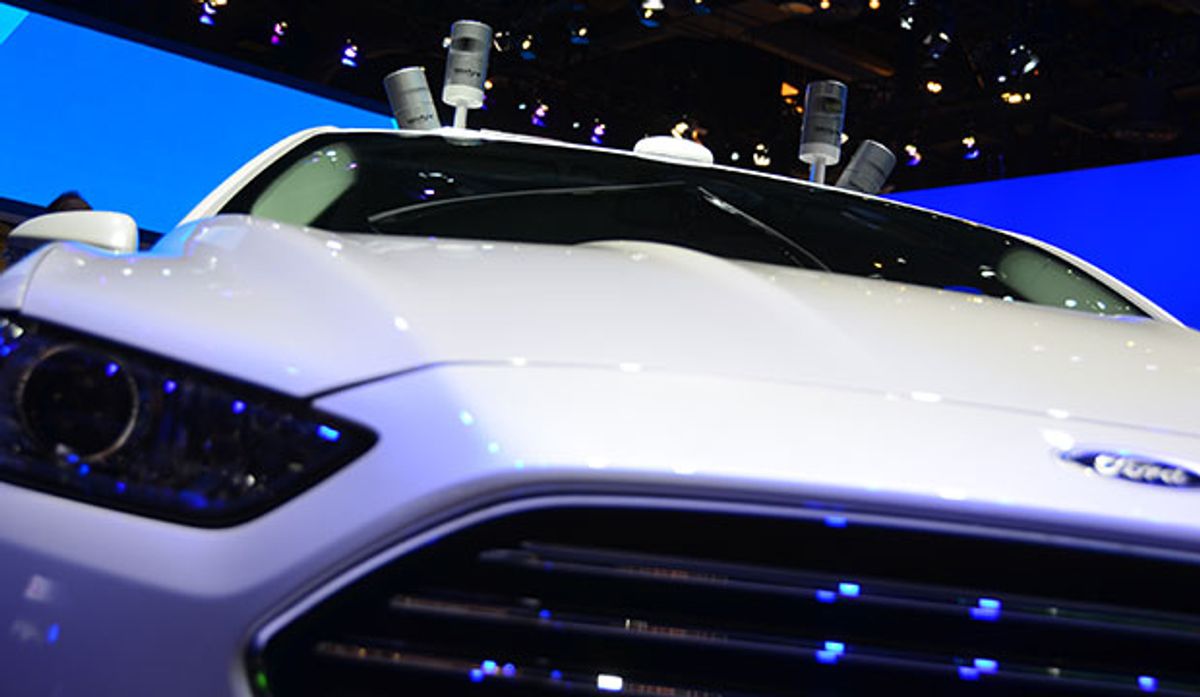Elon Musk may not think that lidar is a necessary sensor for self-driving cars, but pretty much everyone else in the inudstry disagrees. With its long range, impressive accuracy, wide field of view, and near-immunity to the vagries of ambient light and weather, lidar offers a volume of high quality data that's hard to get with cameras or radar. Companies like Ford and Baidu see lidar as an integral sensor on their near-future autonomous car projects, and to support that vision, they've just invested US $150 million in Velodyne, the company that makes the best lidar sensors on the planet.
Ford and Baidu are both very specific about what this $150 million investment is going to do for them. Ford wants Velodyne to "quickly mass-produce a more affordable automotive LiDAR sensor" so the company can launch a fleet of self-driving ride-sharing cars by 2021. Meanwhile, Baidu is hoping to "advance Velodyne’s development of increasingly sophisticated LiDAR sensors."
The primary near-term focus for Velodyne will likely be a redesign of their sensors to make them mass production friendly at a significantly lower cost: the autonomous vehicles that Ford is testing right now (pictured above) use four mid range Velodyne HDL-32Es, and even Velodyne's most affordable sensor currently costs $8,000. Spending $32,000 (or more) on just sensor hardware will not lead to an autonomous car that’s cost effective for anyone, which is why the priority right now is to reduce cost without sacrificing the kind of performance that makes lidar so valuable.

When Velodyne calls itself "the recognized global leader in lidar technology," they're not kidding. Plenty of other companies make lidar systems, but they're usually short to medium range planar sensors designed for indoor navigation and basic obstacle avoidance.
There is certainly a concern here that this investment would give Ford and Baidu some amount of control over the units that Velodyne produces; presumably, this is why they made the investment in the first place. The issue for everyone else is that there aren't really other options for something with a 100-meter plus range and a wide field of view: Velodyne makes the best stuff, which is why just about everyone putting lidar on autonomous cars is using their (very recognizable) sensors.
Having said that, the next five years will, we hope, yield an exciting variety of new low-cost lidar technologies. Here's a sample of what we're looking forward to:
Quanergy: Has a prototype of a $250 solid state automotive lidar.
Innoviz: Is promising a $100 solid-state automotive lidar by 2018.
Innoluce: Is targeting a $100 MEMS-based lidar by 2018.
These lidars are all aimed at the automotive sector, and as such, they're designed to be low cost and reliable. Long-term reliability has been a concern with Velodyne's hardware, because the sensors are spinning all the time. The companies listed above are all developing solid state lidar, with either no large moving parts, or no moving parts whatsoever. Solid state lidar also promises to be cheaper, and DARPA-sponsored research from MIT is developing lidar that can be manufactured entirely on one single chip.
Our guess would be that Velodyne is also working on its own next-generation lidar system that may be entirely solid state, but we'd also guess that the sensors that Ford and Baidu are looking forward to will be a mass producible, relatively low cost version of Velodyne's existing VLP-16 "Puck." For consumer vehicles with Level 4 autonomy—door to door self-driving, in other words—a more significant redesign will likely be necessary, but Velodyne has a clear development path towards a sensor designed in the context of what Ford wants to do over the next five years with ride sharing vehicles.
Yesterday Ford announced that it pegged 2021 as the launch date for a high-volume, full-autonomous ride-sharing fleet. Besides the investment in Velodyne the car company announced the purchase of Israeli computer vision and machine learning company SAIPS, an exclusive licensing deal with machine vision startup Nirenberg Neurosciences, and an investment in 3D mapping tech firm Civil Maps.
Evan Ackerman is a senior editor at IEEE Spectrum. Since 2007, he has written over 6,000 articles on robotics and technology. He has a degree in Martian geology and is excellent at playing bagpipes.



